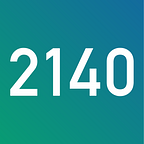Security Token Offering 101 — Token Generations. What Are The Different Token Categories?
In speaking to our clients it became clear that a lot of confusion exists when it comes to the correct denomination of token categories. This is not so strange considering the fact that, at the moment, no universally agreed token classification standard exists. However, we enjoy explaining the different categories to our clients, by looking at the various token generations.
Generation 1: Crypto Currency Tokens
The first generation is the crypto currency token, with Bitcoin being the first and biggest example. It is a token that is used as a general and digital means of exchange, without representing a physical or monetary underlying value. If this is the first time you hear about Bitcoin, we advise you to google it.
Generation 2: Utility Tokens
The second generation is the utility token, which first came into circulation thanks to the introduction of the Ethereum network, with their native token Ether being the first utility token. The utility token is also a digital means of exchange, yet only to be used within a specific network.
As an example, one can compare utility tokens to game credits, which give you the possibility to buy a character upgrade within a certain game you are playing. The limitation is that it is currently not possible to use these game credits in another game which is running on a different network or operating platform. Utility tokens work on the same principle, and as such have the same limitations.
Just like crypto currency tokens, utility tokens don’t represent a physical or monetary underlying value, although many will say that the specific network in which the token is used is the underlying value, which of course contains a grain of truth but certainly does not quite cover it. A second distinctive feature from crypto currency tokens, is that utility tokens are programmable — meaning that all sorts of characteristics can be embedded into the token.
Generation 1b: Stablecoins
As crypto currency tokens and utility tokens are being heavily traded on token exchanges like Kraken and Binance, the need for an intermediary means of exchange, insensitive to crypto price fluctuations, became highly desirable. Enter the stablecoin generation. A stablecoin is a crypto currency token which is backed (pegged) with fiat currency. A good example is Tether, which is designed for each Tether token to always represent exactly 1 USD.
Stablecoins are useful because of their insensitive nature to token price fluctuations. For instance you can use a stablecoin to send value from one person to another via a blockchain network. You can do that with Bitcoin too (or any other crypto currency or utility token), however there is a good chance that the value of Bitcoin might have changed in the meantime, which you might not want to happen while executing a transaction. Not so with a stablecoin, as it remains pegged to the fiat money it’s representing. Because of this usefulness stablecoins have become a success, and you can currently find all sorts of stablecoins representing the most important fiat currencies on earth.
As a side note: stablecoins emerged only after the introduction of crypto currency tokens and utility tokens to the world, which is why they are mentioned in this article in third place. Functionally however they are more related to crypto currency tokens. As such it was decided to name them generation 1b.
Generation 3: Security Tokens
The third generation is the security token. A security token is an actual security — a tradable financial asset, like a company share you buy on the NYSE or Euronext (e.g. Apple) — yet in the most digital format ever. Unlike crypto currency tokens and utility tokens, a security token actually represents an underlying value, which can be any kind of asset, equity, or debt.
A second distinctive feature is that security tokens are highly regulated, complying with all applicable financial laws installed by local and international regulators. This is not the case with crypto currency tokens and utility tokens. A third distinctive feature, is that security tokens can be traded on regulated exchanges, meaning that the Krakens and Binances of today cannot serve as public trading platforms for security tokens. In the EU for instance, one will need a mifid-II regulated security token exchange for trading security tokens publicly.
What you can actually do with security tokens, is properly explained in our first article of this 101 series. In our next article, we will dig deeper into the different types of security tokens because, yes, they can be split into different categories as well.
The Wood for The Trees
If you carefully consider what you just read, you will notice that each new generation of tokens is an improved version of prior generations, with new possibilities.
Next to that, there are a lot of other token denominations that are not mentioned in this article, like for instance “privacy tokens” or “non-fungible tokens”. This is because token denominations usually describe the token’s functionality, and not which generation they belong to. So please bear in mind that the generation overview in this article describes the token family tree, and that within each family there can be different tokens with different functionalities.
Welcome to the world of tokenization!
Written by Maarten Van Doorslaer, Marcell de Vries and Alvaro Garrido, partners at 2140 Consulting. 2140 Consulting is specialized in Security Token Offering (STO) advisory. Feel free to get in touch.
